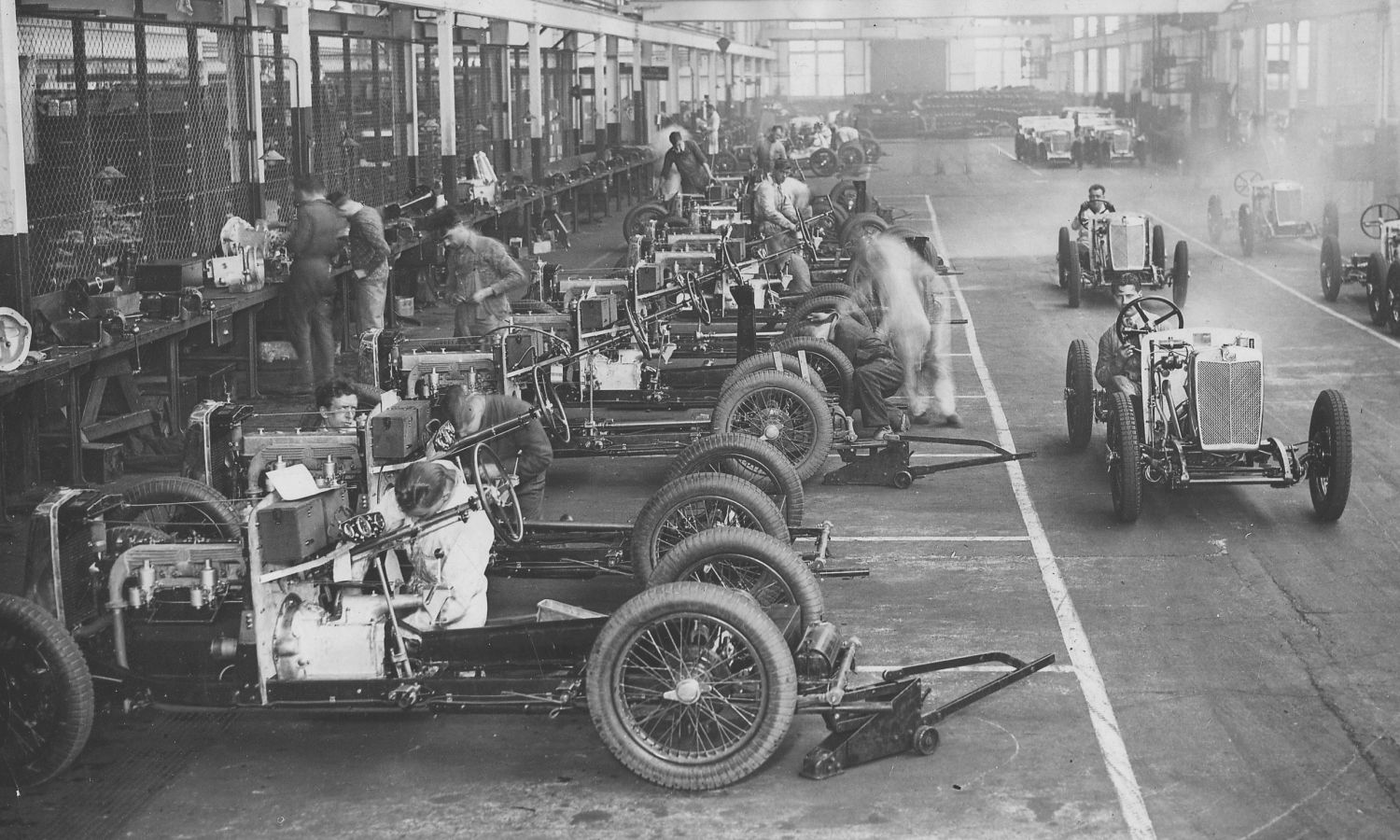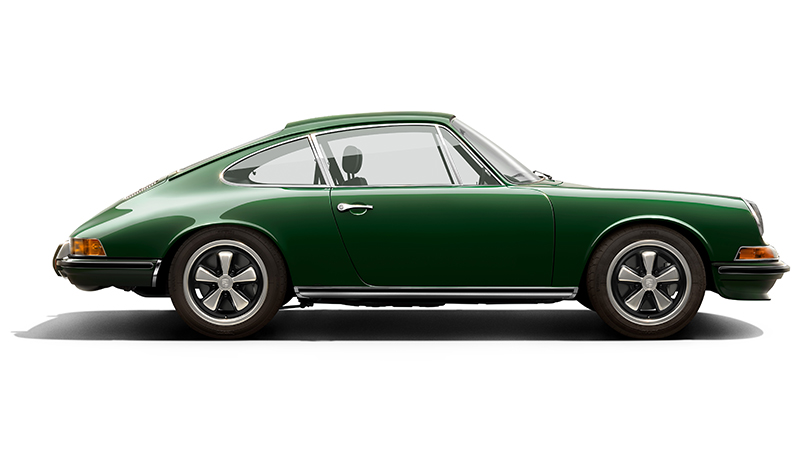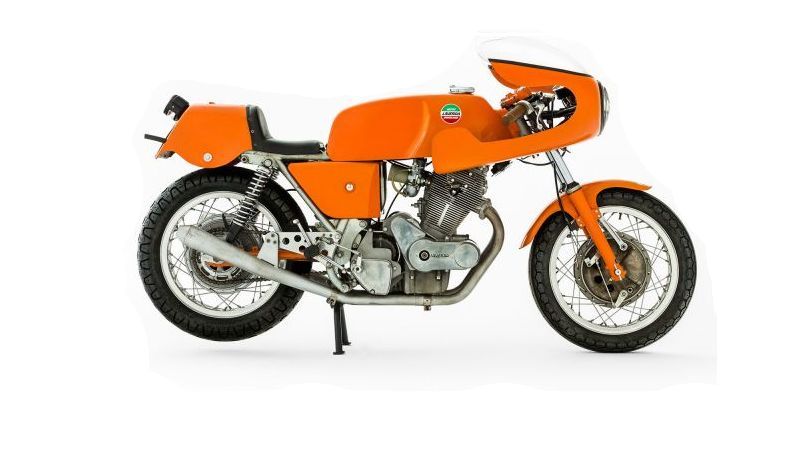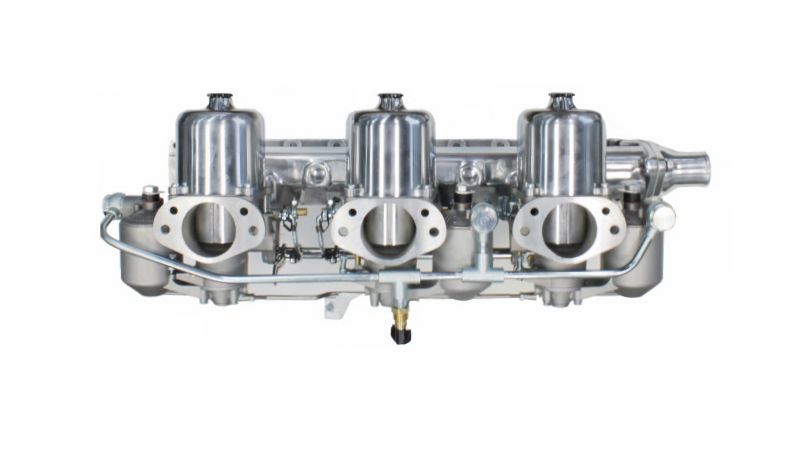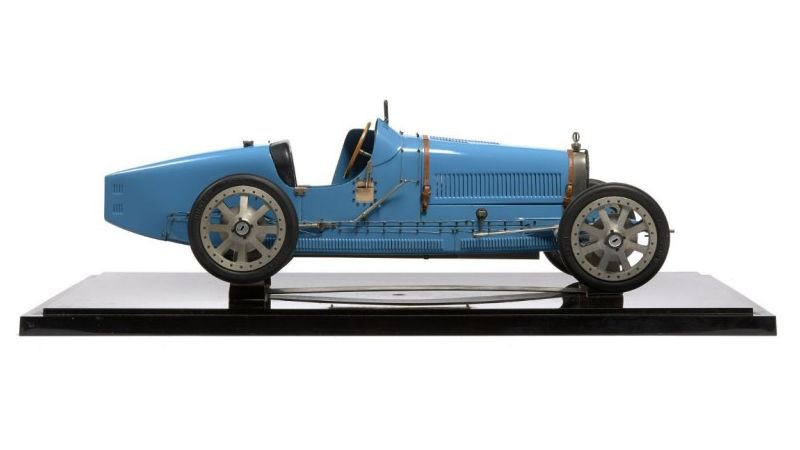MG Motor Cars
Morris Garage
In 1947 the roads of America began to be invaded by a little car that seemed a throwback to the days of the 1920's. It was a small, square two-seater mounted on large wire wheels, and looked, in comparison to the huge American machines, like a vintage classic being taken out for its bi-annual airing.
But when it made a habit of leaving everyone else behind at green lights, and threaded expertly through traffic like a sure-footed cat, American drivers began to realize that it was not a museum piece. If one had the temerity to follow it on a winding road, he was sure to lose sight of it within a mile, as the little midget swung swiftly through the tightest curves, leaving behind only the hard rapping sound of its throaty exhaust. It looked like fun to drive. And it was!
It was the MG-TC, newly imported from England, a thoroughbred machine, the latest in a long line of sports-racing cars. The snappy performance, plus the modest price, re-introduced America to the sports car.
A car with initials for its name? To a country accustomed to the sonorous ring of Deusenberg and Cadillac, the smooth flowing syllables of Chevrolet and Locomobile, and the hard, clean sound of Stutz and Ford, the lean initials MG, encased in their octagon, were quite strange. In 1912 William R. Morris, a former bicycle maker, formed a company called Morris Motors Limited. A subsidiary corporation was named The Morris Garages. But it was not until 1923 that the initials were placed on the radiator of a car.
The first MG was built because of a need, a need that was sensed intuitively by Cecil Kimber, general manager of Morris Garages. He felt that the public wanted a small, but high-performance sporting machine that could be driven sedately on the roads during the week and raced on Sundays. But the most important point was that it be priced modestly. Not everyone could afford a Bentley or Mercedes, but a little MG would fit the pocketbook, perform as a commuting car, and with a quick change of sparkplugs make a hero of its owner on the weekend. This concept fits practically every production MG from the first midget to the modern streamlined MGA.
In 1923 Cecil Kimber constructed the first MG. He started with a Morris Oxford chassis and mounted a reworked Hotchkiss engine in it. Around this skeleton he wrapped just enough sheet metal to enclose the working parts, squeezed two bucket seats inside, and finished off the rear with a flashy tapered boat tail. The fenders were a gesture, square cut and mounted away from the body on outriggers. Strangely enough this Model 1, with its rounded Cowley, bull nose and no windshield, presented a sleek, functional appearance. It still does. The first MG is still in fine running order and is shipped periodically around the world for the adoration of MG fans everywhere.
Although the first model had no more than a 4-cylinder 750-cubiccentimeter engine, it managed to do about 82 miles per hour, and in 1925 Kimber won a Gold Medal at the Lands End competition. This early shakedown trial proved the worth of the. little car, and the year 1928 saw the first of the Midgets, the Mark IV which was rapidly developed into the Type M. It was phenomenally successful. Cecil Kimber's intuition was well founded: the desire of the public for a small high performance car did exist, and the car he designed went far beyond his expectations. William Morris, who now sported the title of Lord Nuffield, put the financial power of his organization behind the project and a new factory at Abingdon became the home of MG.
The new company, officially named the MG Car Company, approached the business of building a production sports car with a direct ness of purpose that was almost frightening. The plan was simple. A design feature or a piece of equipment that could stand the stress of high speed and brutal punishment during hours of competitive racing was good enough to be incorporated into the sports model for the general public. This led to a pattern of operation. A prototype car was built first, then a record-breaking machine, which was run at official speed trials, followed by a racing version, and finally the so-called sedate road model. However, the road model always carried the genes of its fierce racing ancestry. Sedate was hardly the word!
The first really important racing success was at Brooklands in the Double Twelve Hour Race in May, 1930, where the Midgets captured team prize and defeated their rivals, the Austin team. Fired up by the victory the Abingdon men decided to take the International Class H record, then held by Austin with 84 mph. They chose the EX120, a prototype model, and redesigned it completely. When the car was in running shape a private test was arranged. With the Brooklands track closed for the winter, the MG crew, led by Captain George Eyston, gathered on a strip of public highway outside Newmarket. In the foggy dawn they quietly unloaded EX120 from the truck and prepared the car for the run. Like saboteurs on a secret mission they watched for the police, who would have jailed the lot of them.
When their muffled, surreptitious preparations were done, Eyston made a spectacular entrance. Disdainful of the police, he arrived, gleaming in the early sunlight with white coveralls, white helmet, white gloves - a beacon that could be seen for miles. After a set of railroad crossing gates were illegally lifted, the test run was made. Eighty-seven mph! In December of 1930, the little car made it official at Montlhery, France, then raised it at Brooklands in March to 97 mph.
But Eyston was dissatisfied. He wanted to crack the magic 100 mph figure for the flying mile. With an engine of only 743 cc. such a record would stand for years. The attempt was made at Montlhery in the summer of 1931. It was successful. Eyston drove to a record of 101 mph. and then figured in an incident that would have mystified Sherlock Holmes.
After finishing the record run he swung around the track for an extra lap. As he drove out of sight of the pits, the crew heard the engine cut out. They piled into their truck and raced around the bend. There was EX120 in flames! Only seconds remained in which to save the driver. The crew knew that the big-framed Eyston could not remove himself from the tightly fitting cockpit! With frantic haste they crowbarred the side panels off. The seat was empty! A desperate search of the track revealed nothing - no driver!
Eyston himself later supplied the answers. On that last lap he discovered smoke and flames rising at his feet. Slowing the car to 60 he managed, with that last ditch strength of desperation, to jump from the car. A moment later a Frenchman, testing his Citroen, found the unconscious Eystron, put him in his car and drove across the fields to the Montlhery hospital. There the anxious MG crew found him, quietly recuperating from his bruises, not at all concerned about his phantom disappearance. This ended the saga of EX 120.
Before the dust raised by EX120 could settle, EX127 appeared - the Magic Midget. Sporting an aerodynamically streamlined body, it also featured a venturi type windshield, which sucked the oncoming air up between two parallel sheets of glass. The driver actually viewed the track through an open slot, but a test with a mechanic sitting on the bonnet, throwing confetti at the windshield, proved that nothing would get through. EX 127 raised the record to 120 mph. Then Bobby Kohlrausch of Germany bought it, installed the new Q-Type engine, ran the machine to a new record of 130 mph and followed that with a screaming 140 mph on the Frankfurt Autobahn. At that point, perhaps under Hitler's orders, the car was acquired by Mercedes-Benz.
During these days of feverish record breaking, the factory was producing straight racing and sports cars. The K-3 Magnette was one of the finest, winning race after race, some under the capable guidance of the famed Tazio Nuvolari. But in 1935 the staid MG management participated in an exploit that would have delighted a Broadway press agent. They entered a team of three PA production sports cars in the Le Mans 24 Hour Endurance Race, and for publicity value decided to recruit an all-female team of drivers! So it fell to. doughty George Eyston, who lived in a man's world of engines and high speed, to select and captain the entourage. He picked six girls, all experienced drivers, and immediately fell prey to the journalists. The newspapers called them "Eyston's Dancing Daughters." The phrase persists today as a memory of the 1935 Le Mans, but what should also be remembered is that the girls won their class and brought all three cars in at the end without a scratch!
Suddenly in 1935 Lord Nuffield announced that the MG Car Company would terminate the racing program! He pointed out that high speed had served its purpose. Enough advanced ideas had been developed that could be incorporated in the production cars for years to come. Besides, there was no competition. MG had sewn up the 750 cc. class. But before the axe fell EX 135 had been built. It was run by private owners for several years and finally passed into the hands of Major Goldie Gardner who, shortly before World War II, managed to set a speed record of 206 mph.
During MG's non-racing period a series of models marched along, the J, the Q, the R, and the famous T series. A new designer, Sydney Enever, experimented with the beautiful streamlined scale models that culminated in the MGA. Engine size progressed steadily until 1600 cc. was reached, a size that provided enough acceleration for the production models to cope with the newer postwar cars. EX179, built for a private owner, George Phillips, set a new series of records on the Bonneville Salt Flats with George Eyston and Ken Miles as drivers. This success gave the factory the impetus to design and produce the sleek, aerodynamic MGA. Under the label EX 182 three cars triumphed at Le Mans in 1955, and MG finally abandoned the old square design.
Today the MGA in coupe and roadster bodies can be seen all over America, while the Twin-Cam MGA, the production car with a double overhead camshaft engine, provides the sporting bloods with enough power for serious competition. But the EX's still march on. MG still experiments. In 1958, David Ash and Stirling Moss drove the EX181 to speeds of 243 and 245 mph, and in 1959 Phil Hill flashed it across the salt flats at 254 mph.
What is the appeal of the MG? The best way to describe it is to call it a personal car. It will do whatever the driver asks, within limits. But these limits are widespread. The engine is rugged, long lasting, and easy to maintain. The car handles with the quickness of a cat, and readily forgives most driving errors.
The T series models all had the classic style of vintage machines, while the new series has the functional smoothness of a jet plane. No matter which model they possess, MG owners love their cars with a rabid fanaticism, and MG Car Clubs were among the first specialized sports car clubs in America. Most of our great racing drivers started their careers in MG's. Perhaps the little car even taught them to drive! The MG heralded the era of European automobiles in America. And even now it is still the most sought after small sports car in the US.
We are looking for the following cars. If you do have any of the below listed vehicles - and you are ready to sell - please Contact Us.
| T-Series |
|---|
| TC |
| TD |
| TF |
| New-Series |
| MGA |
| MGB |
| Midget |
We buy, sell, broker, locate, consign and appraise exceptional classic, sports and collector MGs'
Contact us when you are serious about buying a fine MG Motor Car or to arrange a free and confidential valuation with a view to selling.
